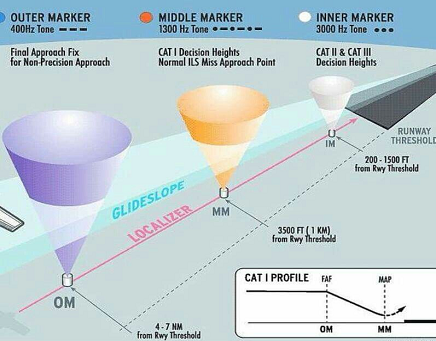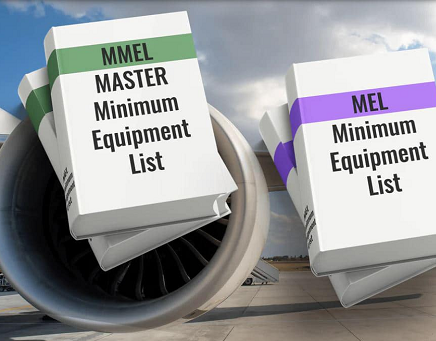Advance Flight Operations
Automatic Dependent Surveillance Broadcast
(ADS-B)
Automatic Dependent Surveillance-Broadcast (ADS-B) An Overview: This course provides a comprehensive understanding of Automatic Dependent Surveillance-Broadcast (ADS-B) technology, its development, implementation, and impact on modern aviation. It focuses on the principles, operational benefits, and regulatory requirements associated with ADS-B. Course Highlights: Introduction to ADS-B: Explanation of the fundamental…
Automatic Dependent Surveillance Contract
(ADS-C)
Automatic Dependent Surveillance-Contract (ADS-C) An Overview: This course provides an in-depth understanding of Automatic Dependent Surveillance-Contract (ADS-C) technology, focusing on its development, operation, and significance in aviation. It covers the technical principles, benefits, and regulatory aspects of ADS-C, highlighting its role in improving flight safety and efficiency, especially…
Approach and Landing Accidents Reduction
(ALAR)
Approach and Landing Accidents Reduction (ALAR) An Overview: This course provides a thorough examination of the Approach and Landing Accidents Reduction (ALAR) initiative, focusing on strategies, best practices, and technologies aimed at mitigating risks during the critical phases of flight. It covers the principles, implementation, and effectiveness of…
Aircraft Performance
Aircraft Performance An Overview: This course provides a comprehensive understanding of aircraft performance, covering the principles, calculations, and factors affecting the performance of various types of aircraft. It explores the theoretical and practical aspects of aircraft performance, emphasizing its critical role in flight operations and safety. Course Highlights:…
Concept of Weight & Balance in Aircraft
Concept of Weight & Balance in Aircraft An Overview: This course provides a thorough understanding of the concepts and principles of weight and balance in aircraft. It covers the importance of proper weight and balance management for safe and efficient flight operations, emphasizing the calculations, regulations, and practical…
Controlled Flight into Terrain (CFIT)
Controlled Flight into Terrain (CFIT) An Overview: This course provides a comprehensive examination of Controlled Flight into Terrain (CFIT) incidents, focusing on understanding the causes, prevention strategies, and technological advancements aimed at reducing CFIT occurrences. It emphasizes the importance of situational awareness, proper training, and the implementation of…
ILS SYSTEM
(CAT-II & CAT-III)
(CAT-II & CAT-III) ILS SYSTEM (CAT-II & CAT-III) (CAT-II & CAT-III) ILS SYSTEM (CAT-II & CAT-III) ILS SYSTEM (CAT-II & CAT-III) An Overview: This course provides an in-depth exploration of Instrument Landing System (ILS) categories II and III, focusing on their development, operation, and significance in enhancing precision…
Fuel Economy & Emission Reduction in Aircraft
Fuel Economy & Emission Reduction in Aircraft An Overview: This course provides a comprehensive understanding of strategies and technologies aimed at improving fuel economy and reducing emissions in aircraft. It focuses on the principles, best practices, and innovations that contribute to more sustainable and efficient aviation operations. Course…
Crew Resource Management (CRM)
Aviation Crew Resource Management An Overview: The “Aviation Crew Resource Management” (CRM) course provides an in-depth understanding of the principles and practices essential for effective teamwork and communication among aviation crew members. This comprehensive 5-day program is designed to enhance safety, efficiency, and decision-making within the aviation environment…
Aviation Safety Management System
(SMS)
Aviation Safety Management System (SMS) An Overview: This course provides a detailed exploration of Aviation Safety Management System (SMS), focusing on the systematic approach to managing safety, including organizational structures, accountabilities, policies, and procedures. It covers the principles, implementation, and continuous improvement of SMS to enhance safety in…
Electronic Ground Proximity Warning System (EGPWS)
Electronic Ground Proximity Warning System (EGPWS) An Overview: This course offers an in-depth exploration of the Electronic Ground Proximity Warning System (EGPWS), focusing on its design, functionality, and role in enhancing flight safety. It covers the system’s components, operational procedures, and integration into aircraft systems to prevent controlled…
Concept of Aviation Security
Concept of Aviation Security An Overview: This course provides a comprehensive introduction to the concepts and practices of aviation security, focusing on the principles, policies, and measures designed to protect aviation operations from threats and ensure the safety of passengers, crew, and assets. It covers the evolution, implementation,…
Extended Range Twin Operations (ETOP)
Extended Range Twin Operations (ETOP) An Overview: This course provides a detailed examination of Extended Range Twin Operations (ETOP), focusing on the principles, regulations, and operational practices that enable twin-engine aircraft to operate on long-haul flights over extended distances and remote areas. It covers the technical and procedural…
Fatigue Risk Management(FRM) in General.
Fatigue Risk Management (FRM) in General An Overview: This course provides an in-depth understanding of Fatigue Risk Management (FRM), focusing on strategies and practices to identify, assess, and mitigate fatigue-related risks in aviation operations. It covers the principles of fatigue management, regulatory requirements, and effective implementation of FRM…
Global Positioning System
(GPS)
Global Positioning System (GPS) An Overview: This course provides a thorough introduction to the Global Positioning System (GPS), focusing on its principles, applications, and integration into aviation. It covers the technology behind GPS, its operational uses, and how it enhances navigation and safety in aviation. Course Highlights: Introduction…
Low Visibility Procedures
(LVP)
Low Visibility Procedures (LVP) An Overview: This course provides an in-depth exploration of Low Visibility Procedures (LVP), focusing on the protocols, techniques, and safety measures required for aviation operations in reduced visibility conditions. It covers the operational, regulatory, and procedural aspects necessary to ensure safe and efficient operations…
Minimum Equipment List” (MEL) Procedure
Minimum Equipment List (MEL) Procedure An Overview: This course provides a comprehensive guide to the Minimum Equipment List (MEL) Procedure, focusing on the essential aspects of managing and operating aircraft with equipment that is temporarily inoperative. It covers the creation, use, and regulatory requirements of MEL to ensure…
North Atlantic Operations of Flight
North Atlantic Operations of Flight An Overview: This course provides an in-depth exploration of North Atlantic Operations of Flight, focusing on the unique operational, regulatory, and procedural aspects of flying across the North Atlantic region. It covers the complexities of navigation, communication, and safety in one of the…
Performance-Based Navigation
(PBN)
Performance-Based Navigation (PBN) An Overview: This course provides a thorough introduction to Performance-Based Navigation (PBN), focusing on the principles, implementation, and benefits of advanced navigation systems that enhance operational efficiency and safety. It covers the concepts, technologies, and regulatory frameworks necessary for effective PBN operations. Course Highlights: Introduction…
Precision Runway Monitor (PRM) System
Precision Runway Monitor (PRM) System An Overview: This course offers a detailed exploration of the Precision Runway Monitor (PRM) System, focusing on its design, functionality, and application in enhancing runway safety. It covers the technology behind PRM, its operational benefits, and how it supports the safe and efficient…
Predictive Wind Shear
(PWS)
Predictive Wind Shear (PWS) An Overview: This course provides a comprehensive overview of Predictive Wind Shear (PWS) systems, focusing on their role in enhancing flight safety by detecting and forecasting wind shear conditions. It covers the technology, operational procedures, and best practices associated with PWS to help aviation…
Reduced Vertical Separation Minimum
(RVSM)
Reduced Vertical Separation Minimum (RVSM) An Overview: This course provides a comprehensive understanding of Reduced Vertical Separation Minimum (RVSM), focusing on its implementation, benefits, and operational procedures. It covers the principles behind RVSM, the technology required, and how it enhances airspace efficiency and safety by allowing reduced vertical…
Traffic Alert and Collision Avoidance System
(TCAS)
Traffic Alert and Collision Avoidance System (TCAS) An Overview: This course provides a comprehensive introduction to the Traffic Alert and Collision Avoidance System (TCAS), focusing on its functionality, operational use, and impact on aviation safety. It covers the principles behind TCAS, its integration into aircraft systems, and procedures…
Upset Prevention & Recovery Training
(UPRT)
Upset Prevention & Recovery Training (UPRT) An Overview: This course offers a detailed exploration of Upset Prevention and Recovery Training (UPRT), focusing on the techniques, strategies, and best practices for preventing and recovering from aircraft upsets. It emphasizes practical skills and theoretical knowledge essential for enhancing flight safety…
“Weapon Onboard Aircraft” Training
Weapon Onboard Aircraft Training An Overview: The “Weapon Onboard Aircraft” course offers an in-depth analysis of the integration, management, and operational deployment of weapons systems on aircraft. This comprehensive program is designed to provide participants with a thorough understanding of the historical evolution, technological advancements, regulatory considerations, and…
Dangerous Goods Regulations
Dangerous Goods Regulations An Overview: This course provides a thorough understanding of Dangerous Goods Regulations, focusing on the classification, handling, and transport of hazardous materials within the aviation industry. It covers the regulatory frameworks, safety procedures, and best practices to ensure compliance and mitigate risks associated with dangerous…
Menu




























